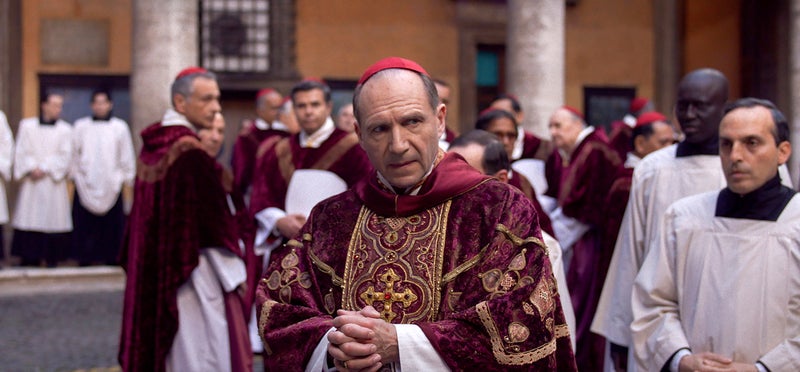Whose story? New Oscar nominated film September 5 evokes the tension and dilemmas of live crisis reporting
Whose story? New Oscar nominated film September 5 evokes the tension and dilemmas of live crisis reporting
Share:
How a TV sports crew found itself live screening the 1972 Olympics attack, and wrestling with a cascade of moral and logistical challenges that would change news coverage for ever. In a darkened broadcasting control room, a team of sports journalists covering the 1972 Munich Olympics for ABC television realise to their horror that they have been thrust entirely unprepared into covering a terrifying global news event: a hostage crisis in the Olympic village that would come to be known as the Munich massacre.
![[From left, Peter Sarsgaard as Roone Arledge, Ben Chaplin as Marvin Bader and John Magaro as Geoff Mason in September 5]](https://i.guim.co.uk/img/media/27d03a3eaf0e0119ba0dccd9fd6b4fec6e2adc24/0_0_5488_3463/master/5488.jpg?width=445&dpr=1&s=none&crop=none)
Journalism is one of the more oft-portrayed professions on the big screen. Hollywood’s fascination with the work of real-life reporters has given us countless classics, including All the President’s Men (1976), The Insider (1999), Good Night, and Good Luck (2005), Spotlight (2015) and The Post (2017), along with more recent films, such as She Said (2022). From left, Peter Sarsgaard as Roone Arledge, Ben Chaplin as Marvin Bader and John Magaro as Geoff Mason.
![[September 5 evokes the heated atmosphere in the control room as groundbreaking decisions are made]](https://i.guim.co.uk/img/media/06c464f3fc4a433665e4b533dca6180674926d8d/0_0_5384_2573/master/5384.jpg?width=465&dpr=1&s=none&crop=none)
But while films about journalists have typically focused on the intrigue of investigative reporting or the risks undertaken by frontline war correspondents, few movies have examined the challenges and dilemmas of live broadcasting, when journalists are forced to make razor-thin decisions about how to cover an unfolding news story under immense pressure. September 5 therefore offers a rare insight into the media, conveying the white-knuckle drama of live news from within a broadcast control room as the ABC reporters, editors and producers grapple with an urgent cascade of moral and logistical challenges.
![[The film-makers used original blueprints to reconstruct the control room and restored vintage equipment sourced from collectors and museums]](https://i.guim.co.uk/img/media/d5d0532584a83d2b7a2b52ab7beec8e191d1a9ca/0_0_4821_4933/master/4821.jpg?width=445&dpr=1&s=none&crop=none)
Tim Fehlbaum, the film’s director and co-writer, explains why he wanted the film to focus on the quandaries the journalists faced: “We seek to raise ethical questions – which are as germane now as they were then – about the responsibilities and impacts of crisis reporting and our consumption of it.”. September 5 recounts the decisions and actions of the ABC sports team after Palestinian terrorists from the Black September group killed two members of the Israeli Olympic team and took another nine of its athletes hostage. The ABC team, suddenly responsible for the subsequent 22 hours of live coverage, included legendary TV executive Roone Arledge (played by Peter Sarsgaard), producer Geoff Mason (played by John Magaro), and his mentor Marvin Bader (played by Ben Chaplin).
![[Daniel Adeosun as Gary Slaughter, who taped film reels to his torso to smuggle them in and out of the Olympic village]](https://i.guim.co.uk/img/media/583b4f20968b5850f656240e758b5e533795404c/0_0_5400_2573/master/5400.jpg?width=465&dpr=1&s=none&crop=none)
September 5 evokes the heated atmosphere in the control room as groundbreaking decisions are made. The frantic intensity of their challenge is compounded by the film-makers’ decision to set September 5 almost entirely in the control room and studio. The chaos of the day’s events is seen entirely from the journalists’ point of view, evoking the heated drama and tension. “The audience should experience the intensity of the live coverage with the characters, and be there when moral decisions have to be made against the backdrop of a constantly ticking clock,” says Fehlbaum.
![[From top left: Peter Sarsgaard, John Magaro, Ben Chaplin, Leonie Benesch and Tim Fehlbaum]](https://i.guim.co.uk/img/media/06f78627d4707aa0057b8e8e86f1a19b6d38422c/0_0_6412_5079/master/6412.jpg?width=445&dpr=1&s=none&crop=none)
The film, which has been nominated for an Oscar for best original screenplay, ramps up the immersive experience by cleverly incorporating the original ABC footage. It was even played on the monitors in the control room during filming, which means that the actors were reacting in real time to the authentic ABC footage instead of performing against green screens. “Working with the real footage was a total gamechanger,” says Magaro. “It was like another cast member.”.
The film-makers used original blueprints to reconstruct the control room and restored vintage equipment sourced from collectors and museums. Indeed, part of what makes September 5 so striking is the way its insights into journalism are combined with its painstaking approach to recreating the analogue technology that the ABC team used. The film-makers reconstructed the control room using the original blueprints and restored the vintage equipment, sourced from collectors and museums, to working order.
The technological challenges are central to the story – whether the journalists are trying to install a bulky studio camera opposite the apartment where the hostages are being held, or smuggling 16mm film reels in and out of the cordoned-off Olympic village by taping them to the torso of ABC employee Gary Slaughter (played by Daniel Adeosun), who disguises himself as a member of the US track team.
The technology is also central to the dilemmas the journalists confront, such as what can be shown live on air, and what happens if their broadcasts start influencing actual events – for instance when their live footage of a rescue attempt by West German police is watched on a TV set by the terrorists. Daniel Adeosun as Gary Slaughter, who taped film reels to his torso to smuggle them in and out of the Olympic village.











